Originally posted on gCaptain. Reposted with permission.
 “The Finest Hours” is far from a perfect movie. Nevertheless, it recounts a remarkable story of heroism at sea that is well worth retelling. For anyone who has spent any time around ships, it is also hard to resist a movie in which one of the lead characters is a grumpy chief engineer.
“The Finest Hours” is far from a perfect movie. Nevertheless, it recounts a remarkable story of heroism at sea that is well worth retelling. For anyone who has spent any time around ships, it is also hard to resist a movie in which one of the lead characters is a grumpy chief engineer.
On February 18, 1952, the T2 tanker SS Pendleton broke in half in a Nor’easter, in 60-foot seas and 70-knot winds off Cape Cod. The US Coast Guard Chatham Lifeboat Station dispatched BM1 Bernie Webber with a crew of three in a wooden 36-foot-long motorized lifeboat to search for the Pendleton. In almost impossible conditions, Webber and his crew crossed Chatham bar, located the ship and rescued 32 of the Pendleton survivors in a boat designed for 12, including the crew. It is considered to be the greatest small boat rescue in history. The movie, “The Finest Hours,” starring Chris Pine, Casey Affleck, and Holliday Grainger is a dramatization of the rescue, based on a book of the same name by Michael J. Tougias and Casey Sherman.

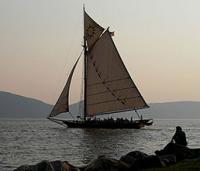 We
We 
 On February 3, 1943, the troopship
On February 3, 1943, the troopship 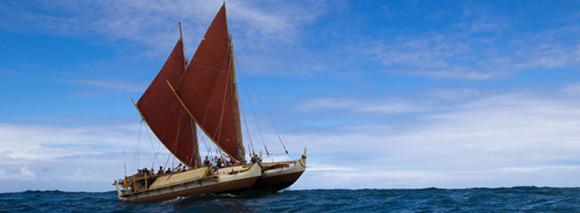 Hōkūleʻa
Hōkūleʻa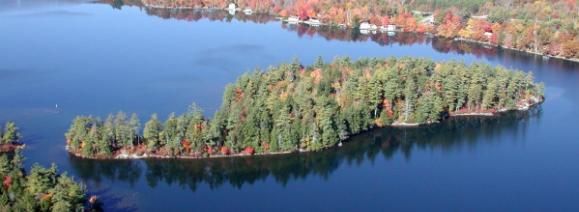 Hawaii 2
Hawaii 2 In the late 60s and early 70s, hovercraft ferries were the ships of the future.
In the late 60s and early 70s, hovercraft ferries were the ships of the future. 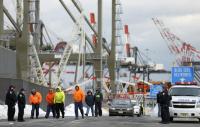 On Friday, more 4,000 longshoremen walked off the job shutting down piers and container terminals in New York and New Jersey.
On Friday, more 4,000 longshoremen walked off the job shutting down piers and container terminals in New York and New Jersey.  If you are in the New York area come help celebrate Lilac, America’s only steam-powered lighthouse tender at a Maritime Mardi Gras fundraiser on Fat Tuesday, February 9th from 6 – 8 PM on 79 Walker Street on the 6th floor, (one block south of Canal between Layfatte and Broadway), in Manhattan. Let the good times roll with cocktails, light appetizers, and a silent auction.
If you are in the New York area come help celebrate Lilac, America’s only steam-powered lighthouse tender at a Maritime Mardi Gras fundraiser on Fat Tuesday, February 9th from 6 – 8 PM on 79 Walker Street on the 6th floor, (one block south of Canal between Layfatte and Broadway), in Manhattan. Let the good times roll with cocktails, light appetizers, and a silent auction.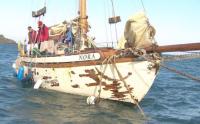 Two American sailors, Bob Weise and Steve Shapiro, both 71, have been attempting to sail across the Atlantic from Norway to Maine in a 40′ gaff rigged sloop named Nora. They began the attempt last July and it has not gone well. In the last seven months, they have been rescued nine times. In this case, persistence is not a virtue.
Two American sailors, Bob Weise and Steve Shapiro, both 71, have been attempting to sail across the Atlantic from Norway to Maine in a 40′ gaff rigged sloop named Nora. They began the attempt last July and it has not gone well. In the last seven months, they have been rescued nine times. In this case, persistence is not a virtue.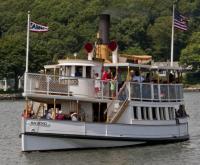 Yesterday,
Yesterday, 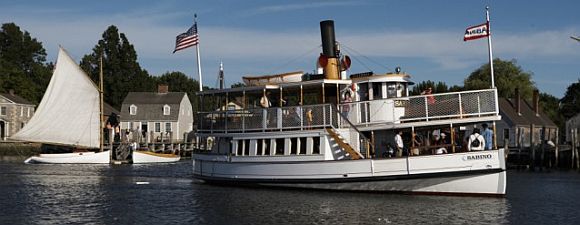 The
The 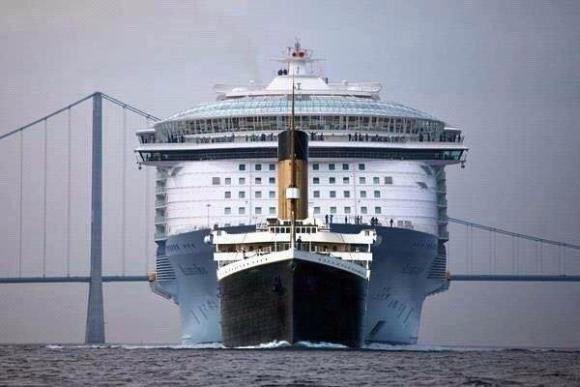 Numbers are fine but sometimes the best way to communicate scale is visually. The image above is what it would have looked like if the largest passenger liner of roughly 100 years ago,
Numbers are fine but sometimes the best way to communicate scale is visually. The image above is what it would have looked like if the largest passenger liner of roughly 100 years ago, 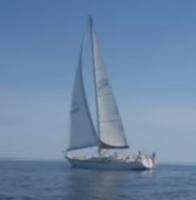 Here on the west bank of the Hudson River, I spent most of the morning digging out from yesterday’s blizzard, which dumped around 30 inches of snow on us. So, it seems like a good time to think of sunshine and warm breezes. The video, after the page break, is of an Albin Nimbus 42, named Sherry Dawn. This summer I hope to be sailing a sister vessel named Arcturus. Right now Arcturus, ex-Obsession, is being worked on by the good folks at
Here on the west bank of the Hudson River, I spent most of the morning digging out from yesterday’s blizzard, which dumped around 30 inches of snow on us. So, it seems like a good time to think of sunshine and warm breezes. The video, after the page break, is of an Albin Nimbus 42, named Sherry Dawn. This summer I hope to be sailing a sister vessel named Arcturus. Right now Arcturus, ex-Obsession, is being worked on by the good folks at  Anyone who may doubt that we live on a water planet or that what happens at sea has a huge impact for everyone, even those living far inland, need only look to this year’s
Anyone who may doubt that we live on a water planet or that what happens at sea has a huge impact for everyone, even those living far inland, need only look to this year’s 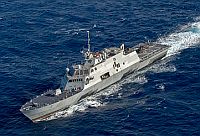 The sad saga of the Littoral Combat Ships (LCS) continues. The
The sad saga of the Littoral Combat Ships (LCS) continues. The 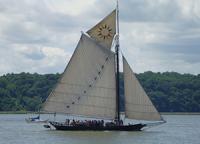 Only days after hearing good news about
Only days after hearing good news about  When I hear “Volvo Round ….” I immediately fill in the blank with “the World.” (OK, technically, the race is named the
When I hear “Volvo Round ….” I immediately fill in the blank with “the World.” (OK, technically, the race is named the 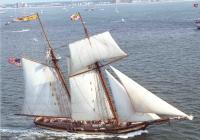 Tremendous news for a great ship. On Monday, Maryland’s
Tremendous news for a great ship. On Monday, Maryland’s 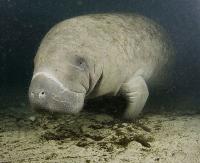 When I was in high school in Florida in the 70s, the question was not “will the manatees become extinct?” but “how fast?” The manatees appeared to be doomed by a loss of habitat, pollution, slow birth rates and being run over by powerboats. By the late 1960s, only a few hundred
When I was in high school in Florida in the 70s, the question was not “will the manatees become extinct?” but “how fast?” The manatees appeared to be doomed by a loss of habitat, pollution, slow birth rates and being run over by powerboats. By the late 1960s, only a few hundred